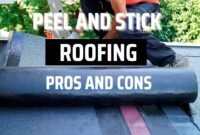Are you in the middle of searching for the right roofing for your house? You might ask what is TPO roofing? Before that, maybe you should list any specific need or preference you’ll want to have from the roofing. Once you’ve got that, the next thing is you might want to compare some types of roofing and choose the one of them which meets your needs the most.

As the most popular type of roofing, TPO roofing might come first to your mind. There are some positive things about this roofing, such as durability and reflectivity. Besides, you’ll have it at a reasonable price.
TPO vs. PVC roofing
So, what is TPO roofing compared to PVC? Whether you’ve listed your need or not, there are some basic comparisons you should know among different types of roofing. The first one is TPO and PVC. They have some similarities that you might want to keep in mind.
Firstly, they are similar in materials. They both are made of thermoplastic, so it makes them resistant to leaks. When you’re installing them, you’ll need fewer seams that it gives them less likely to leak because there is less penetrable area.

Secondly, they both are white in color. It provides them with a surface that is reflective and making them heat resistant. No need to worry about the sun’s ultraviolet anymore! Also, they both are flexible. They can conform to the movement and the shape of your roof.
Another thing to keep in mind is that they’re resistant to chemicals, oil, and grease. You might want to choose PVC if you need roofing with better holding up underexposure.
Speaking about TPO, there are various benefits you should know, that it is less expensive than PVC. You’ll absolutely want to take it into your consideration if you’re on a budget. When it comes to weathering, you might also need this roofing.
It a little bit better in resisting tear and break compared to PVC. Another benefit is that you don’t need an additional plasticizer to keep the roofing flexible, and it offers longer-term durability than PVC.
The next one is the benefits of PVC. Even though it costs more money, it is a type of roofing you want to have above your restaurant. It doesn’t get weakened by oils, grease, and chemicals. You might also want to pick this roofing because of its better flexibility over TPO.
It’ll help you so much in processing the installation. Another benefit is that PVC holds more intense heat and sunlight exposure. If your commercial building is located in a high-temperature area, this roofing might be your best choice.
TPO roofing vs. EPDM
There are other roofing that you’ll need to compare with TPO. Yes, EPDM. One similarity between them is the rubber material. Even so, there are some significant differences you should notice.
Firstly, EPDM is the most affordable option. As a business owner, you’ve probably set a budget for roofing, and this might be your best choice.
Besides the cheap material, the labor cost is also cheaper than TPO. But, if you’re thinking about a long-term investment in roofing, you’ll need something thicker like the EPDM. Even though it’s pricier, with its thickness, it’ll absolutely protect your roof longer.

When it comes to durability, you’ll need to pick EPDM. It can last up to decades and hold up with factors of the environment that might cause your roofing crack. While for TPO, it doesn’t resist water as well as EPDM roofing, and it can’t deal with cold temperature as well as EPM.
If the price isn’t something that you’re considering, EPDM might be your best choice. You can save more trouble along the way if you pick the most durable roofing, even if it costs you more money.
TPO roofing installation
In terms of installing roofing, it is important to ensure if your roofing contractor provides the service for you. Either you have it or not, knowing some basics on roofing installation is just as important as comparing each roofing type’s benefits.
- You’ll need welds testing and do it twice a day at least: this is important because, during the welding, you need to prevent the roofing from overheating.
- You won’t need a welder drag to make the installation more proper: your contractor’s job is to straighten the tip part of the roller with the inside part of the nozzle, so make sure he does the job correctly.
- When probing seams, it is important to stay careful: you might face some problems when the probing is incorrect. You don’t need to sharpen the probing. Instead, use the blunt one because once it’s used will sharpen.
For the sake of safety in the future, the membrane should not be created during the installation: folding over the membrane can cause creases and crack. You’ll need to fold back the membrane to avoid this.


